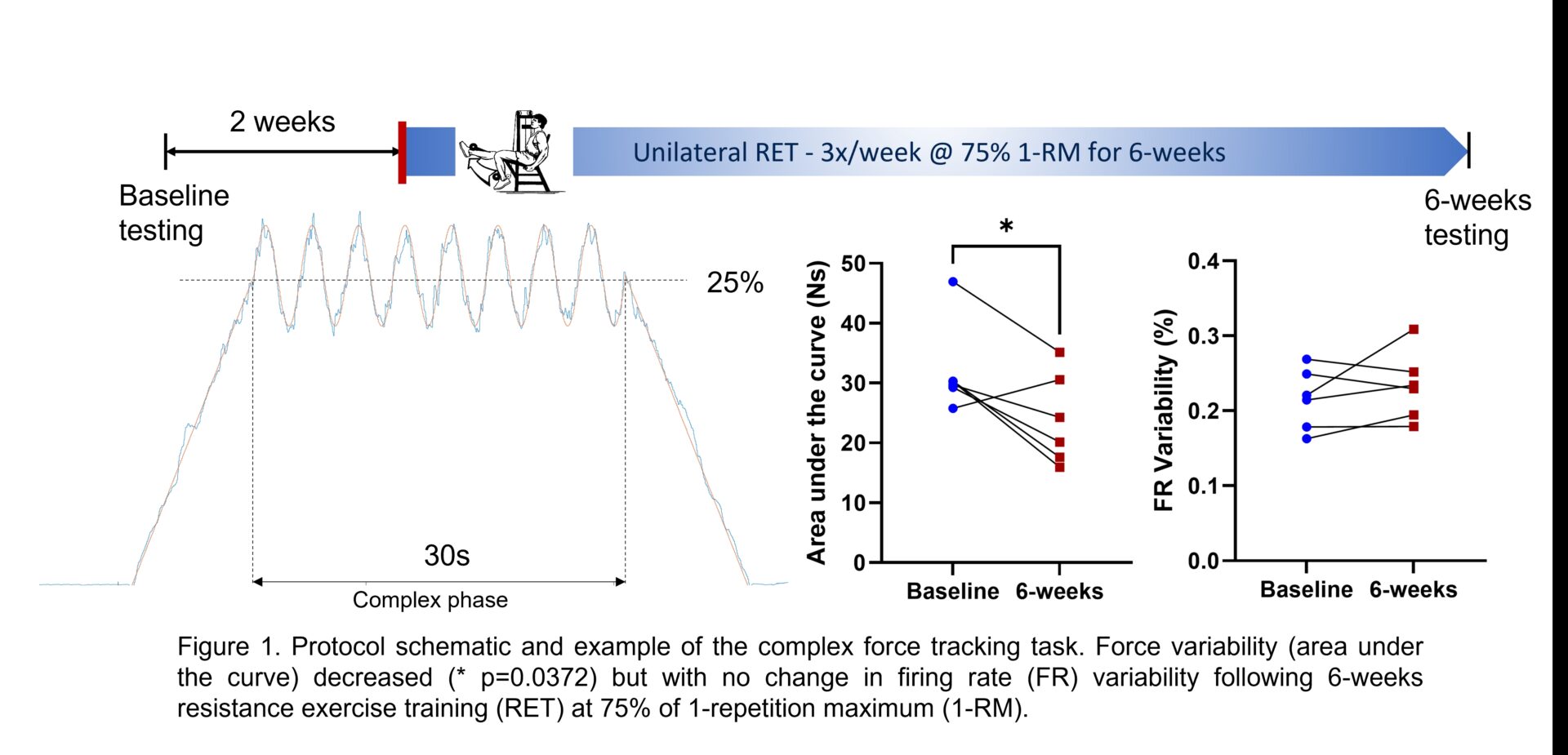Resistance exercise training (RET) is widely employed as an effective intervention to increase muscle mass and strength [1]. In older adults, reductions in force control are strongly associated with declines in daily functional tasks such as balance and dexterity [2], but improvements in force control while maintaining steady contractions have been demonstrated in the same population following RET [3]. The motor unit (MU) describes the motor nerve and all the muscle fibres it supplies and decreased MU firing rate (FR) variability has been associated with improved muscle force control [4]. However, the effects of RET on these properties during complex tasks are unknown. This study aimed to determine the effects of 6-weeks RET on strength, force control and MU FR variability of the vastus lateralis (VL).
6 healthy older male volunteers (66±6 yrs) performed 6-weeks supervised unilateral leg extension RET 3 times per week, consisting of 6 sets of 8 repetitions at 75% of 1-repetition maximum (1-RM). At the start and end of the training period strength was assessed by 1-RM and isometric maximum voluntary contraction (MVC). Force control was assessed by a complex force tracking task consisting of 8 oscillations at 25±4% MVC over 30s. The area under the curve (AUC) was calculated after rectifying the difference between the requested and performed force traces. High-density surface electromyography (HD-EMG) of VL was recorded and following decomposition (DEMUSE), MU FR variability was calculated as the coefficient of variation of the inter-spike interval. Paired t-tests were performed to assess differences in strength and force control with multi-level linear regression models assessing differences in FR variability. Significance was assumed when p<0.05.
In the trained leg, 1-RM increased by 25% following 6-weeks RET (p=0.001; 43.8±8.2kg vs 54.9±8.8kg). There was no difference in MVC between baseline and after 6-weeks training (p=0.182; 393±110N vs 437±139N). During the complex phase, AUC representing force variability decreased following RET (p=0.037; 32.0±7.5Ns vs 23.9±7.6Ns). There was no difference in FR variability between baseline and after 6-weeks training (p=0.145; 0.216±0.040% vs 0.233±0.046%).
RET performed for 6-weeks in older males improved muscle strength and complex force control, but these increases were not explained by changes in MU FR variability assessed at similar absolute forces. This suggests an alternative mechanism to MU firing properties is responsible for force control improvements. RET is an effective intervention for improving muscle strength and function in complex tasks in older people.

